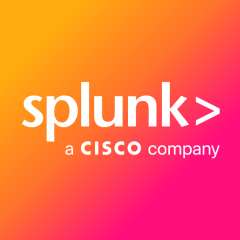What is our primary use case?
My use case for Splunk SOAR is security automation.
We are running a Splunk SOAR cluster. Three nodes in three different environments in a dev-test and prod environment.
How has it helped my organization?
The SOC team has been much less burdened since implementing Splunk SOAR. They're able to completely automate away some events. At the very least, they get so much information gathered from our automated actions that they're able to almost immediately take action if action isn't already taken by the playbooks that are being run.
Splunk SOAR has helped reduce our mean time to resolve. It has reduced, for example, ten-minute investigations into 30-second ones. Sometimes all our analysts need is a little bit of context, and they can immediately make a decision based on that. There are some events that we have where normally investigating them would take about ten minutes. We get a ton of those a day. I did the math and Splunk SOAR saves over 70 hours a week, which is massive. That savings is only for those types of events alone. In that context, it is a huge improvement.
Splunk SOAR has helped improve our business resilience. It's an extremely powerful tool. I do think that the ability it has depends on the people implementing it, though. The implementation needs to be good. If it's not, that's not Splunk SOAR's fault, that's the organization's fault. If they do it right, it is incredible.
Splunk SOAR has saved us time with alert triage. Even on simple events that might take ten minutes, we're taking that down by around 95 percent. Almost all events can at least have some sort of automation that saves minutes and every minute counts and saves us so much time.
Splunk SOAR has saved us time in threat response.
What is most valuable?
The most valuable features are the Splunk SOAR apps and playbooks. I am a Splunk SOAR developer, and my job is to make sure that integrations with third-party systems are done well. I give guidelines for how to properly make Splunk SOAR apps. These two features are essential in how the apps will work.
What needs improvement?
One area for improvement in Splunk SOAR is version control for Splunk apps. Currently, for Splunk playbooks, we can hook up a Splunk store to a Git repository with playbooks in it, and it will pull them down periodically, which is amazing. Splunk apps don't have that, and that would be extremely helpful because we do custom coding a lot. There are many vendors out there. And because there isn't source control, we need to emulate that same behavior, which causes us to do other things. For example, we need to create a Git repository somewhere on SOAR and create a clone job that periodically runs a Git pull action. After that, we bring all that SOAR data into that repository. We need to have a Git Hook that automatically tars the app we just created and then uses the API to automatically upload it. Because of that, now we have this app data that's being doubled up because we have SOAR apps in the Apps directory on the back end of Splunk SOAR, and we also have this Git repository, which holds all the same information. That could be highly simplified, and that is a big gap that would make my life and probably other developers' a lot easier.
There is a specific situation that comes into place when we have a Splunk SOAR cluster we have to work with. If we also don't have it hooked up to an external Splunk Enterprise instance, trying to debug what's going on in the cluster is extremely difficult because there are 45 different log locations. That could be extremely difficult to try and find out what is going on with all the microservices that are being used in a Splunk SOAR cluster. I had to personally develop a tool to be able to monitor all those logs at once and then parse it out and query that log once we're done with whatever operation so that we can get a clear picture of what's going on in the SOAR cluster, which has been immensely helpful, taking hours off of debugging time to do that. It would be nice to have a tool like that natively available in Splunk SOAR to begin with. Even without the cluster, I believe it's over 30 log sources that could go wrong.
Providing Splunk app developers and playbook developers Python Stub files so that way when they create custom code through their IDE, they can have IntelliCode suggestions. It could be dangerous for someone who is coding to constantly have to look back at the documentation and not see, for example, a Python dictionary where they are expecting it. In reality, it's a list, that could cause errors when a playbook runs or when an app runs, and that could be a potential incident that now goes unresolved or a serious issue. That's dangerous. Providing SOAR app developers with some Python Stub files that they can use for IntelliCode suggestions would also be helpful. Also having slight changes to the way that it's expected to create custom modifications to already existing apps on GitHub or Splunk base by essentially inheriting from the base app when we want to have custom modifications, and developers should have to explicitly override any methods from the base class that's there. That way, we're not modifying any of the underlying layers of the base app that's there. We could also hook it up to a Git Repository to receive those updates into the base app and then the custom app. This way we have these custom app features, we have all these extra things being put into it, still on the custom app end so we can have our features and the base app all in one. I think that'd be a novel solution.
For how long have I used the solution?
I have been using Splunk SOAR for one year.
What do I think about the stability of the solution?
As a standalone instance, SOAR is extremely stable. I don't have any issues with it. The only reason there might be an issue is if we lack resources on the hardware itself, and that's more of a problem from an architecting, and engineering perspective, not exactly Splunk SOAR. When it comes to the Splunk SOAR cluster, it is pretty complicated. There are five different microservices, and if we have an issue there, we have 45 different log sources to get that info from, and it can be hard to debug it. If we have a problem, it can be hard to diagnose which microservice we might be having issues with.
What do I think about the scalability of the solution?
Splunk SOAR scales well though when we get to I believe, more than five nodes in a Splunk SOAR cluster, it becomes a little bit unwieldy, and it takes long for things to happen. If we need to update something in the cluster, things can get slow and we have been told by professional services to try and keep it at three nodes because anything more than that is unwieldy as they have said. I believe that is a known issue with Splunk SOAR.
How are customer service and support?
The technical support from Splunk has been good. Whenever we need to engage in professional services, they're always able to give us new information that we did not explicitly know, or they're able to validate what we need. Usually, when we talk to professional services of some kind, which is the main form of customer service I think that we use, it's usually quick and to the point in exactly what we need, which is fantastic. There have been times when we requested professional services, something we needed, and that was developed in-shop just for us, which is fantastic. The tool that was made to remove SOAR cluster nodes was requested by us, and then it became a feature later on. So that was amazing and helpful.
How would you rate customer service and support?
How was the initial setup?
The initial deployment was extremely easy as a stand-alone instance. It's a straightforward process, especially for someone like me who has had to set up other servers containing security tools on them. In terms of setting up a cluster, I unfortunately haven't had experience setting up a cluster explicitly. I have had experience removing nodes from a cluster and with a new tool that was released, I believe, in version 6.0. It was made easier. When it comes to deploying Spunk SOAR, involves downloading the tarball, extracting it, running the pre-install script to ensure proper configuration, and then running the installation script. As long as system resources are sufficient, the installation itself should be quick despite the application's size.
What was our ROI?
The biggest metric that I've seen as a developer admin and DevOps engineer is the time saved. I don't think that on our end, we have set up the ROI functionality in SOAR yet, but I know that the timing has been massive. We should get it set up in SOAR that way the customers see the value.
What other advice do I have?
I would rate Splunk SOAR nine out of ten. It's a fantastic product it needs a few more features to make it amazing. The clustering does need to be simplified a bit. Version controlling for apps and making app development just a little bit easier for developers would take it to the next level. There's no other SOAR product that does what Splunk SOAR does as well. All other SOAR are frankly inferior, but it just needs that little bit of extra functionality to make it a truly great product.
Which deployment model are you using for this solution?
Hybrid Cloud
If public cloud, private cloud, or hybrid cloud, which cloud provider do you use?
Amazon Web Services (AWS)
Disclosure: My company has a business relationship with this vendor other than being a customer. Partners




















